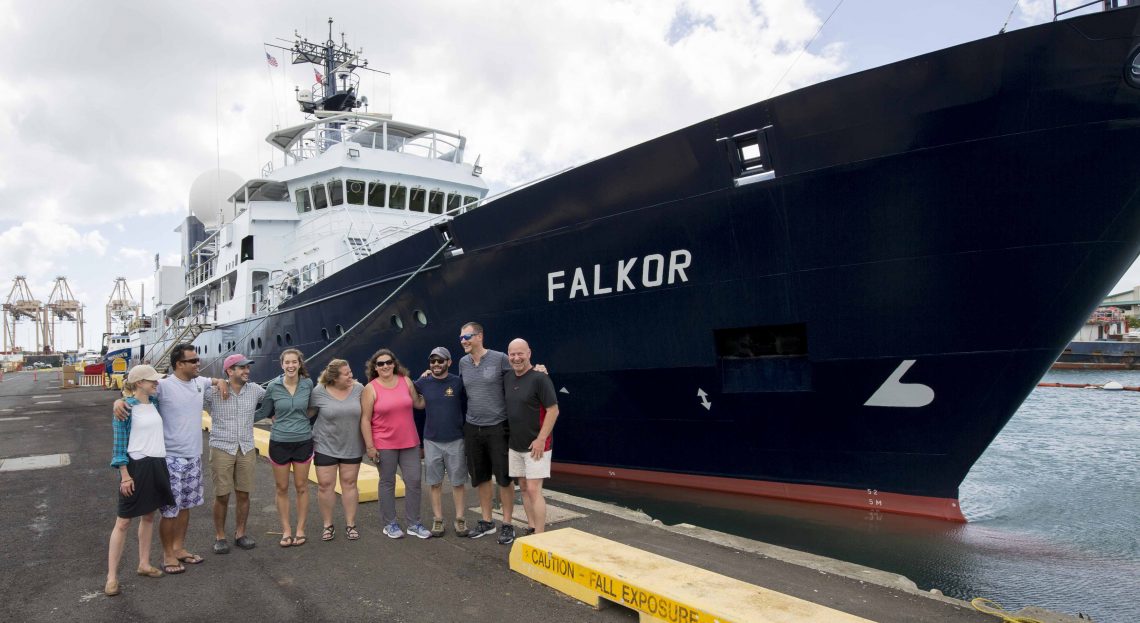If I asked you to picture a coral reef, you might think of snorkelling around colorful ocean architecture surrounded by curious fish. But you can’t snorkel or scuba around deep ocean corals. Thousands of meters below the sea surface, these are high pressure, intense, cold, dark environments with low oxygen levels – not exactly a great holiday atmosphere for humans. Fortunately this is where ROV SuBastian comes in, a remotely operated vehicle that will be our eyes, ears, and arms in the deep ocean, as we observe and steer from the safety of the control room, thousands of meters above.
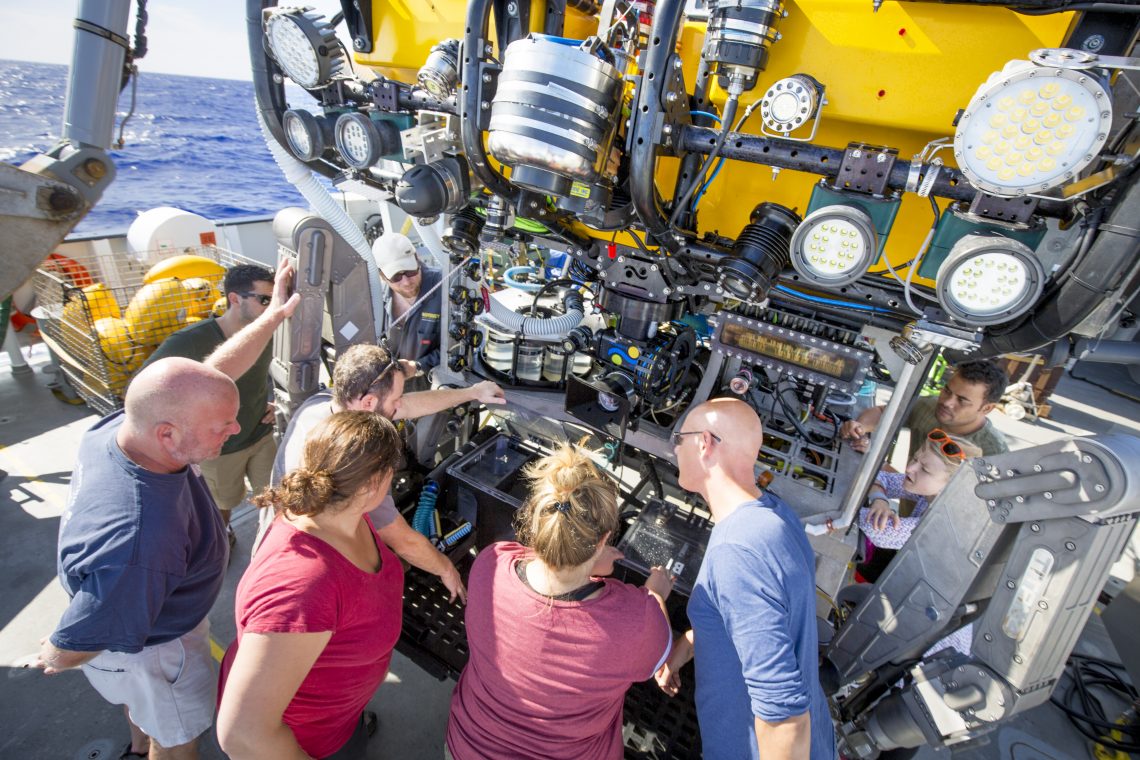
Excitement On Board
There is a special type of anticipation reserved for rarely visited dive sites and places human eyes have never seen; and I can feel that buzz on board R/V Falkor right now. We are headed for the Phoenix Islands Protected Area (PIPA), which is the largest and deepest UNESCO World Heritage Site on Earth. This spectacular region is so remote that it will take six days sailing just to get there from Honolulu. This distance from large land mass makes the nation of Kiribati (pronounced Kirabas) remote and special, but it’s the distances below the sea surface that make this particular project so unique. We are venturing to discover the deep-coral gardens of the Phoenix Islands.
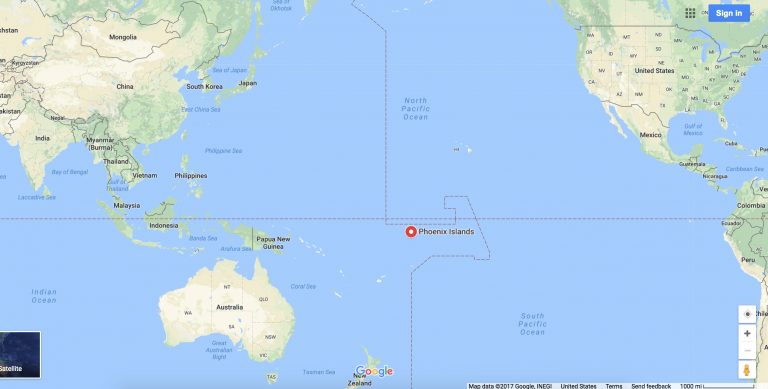
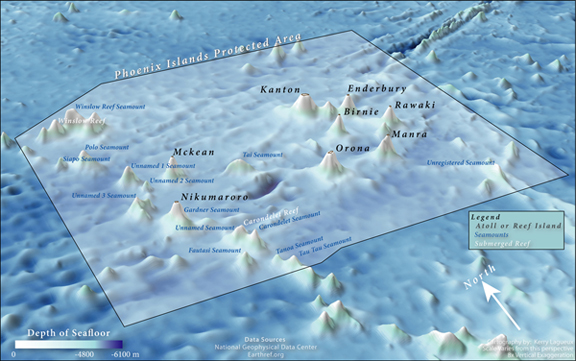
No-one on board can be sure exactly what we will find down there, but discovering new species seems certain. These unusual, deep, dark environments are host to some really interesting adaptations. We want to understand which creatures are thriving down there, and how they are navigating, communicating, and making a living. How are the reefs changing in an age of ocean warming and acidification, and what kind of impact is the creation of these marine protection areas having?
Answering questions
We will be doing visual surveys with ROV SuBastian’s high powered cameras, taking fluid samples, measuring pH levels, as well as sampling coral and other animals. We are using special cameras to get a ‘shark’s eye perspective’ looking at biofluorescence around coral reefs.
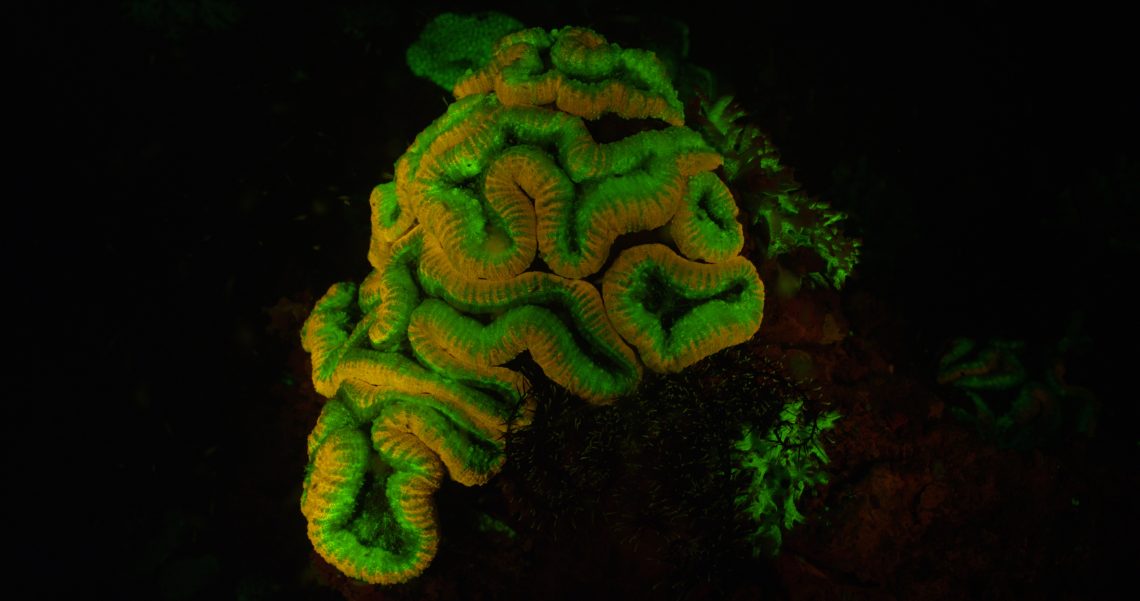
We will also using soft robots that can delicately interact, sample and examine the corals and deep sea marine life of the Phoenix Islands.
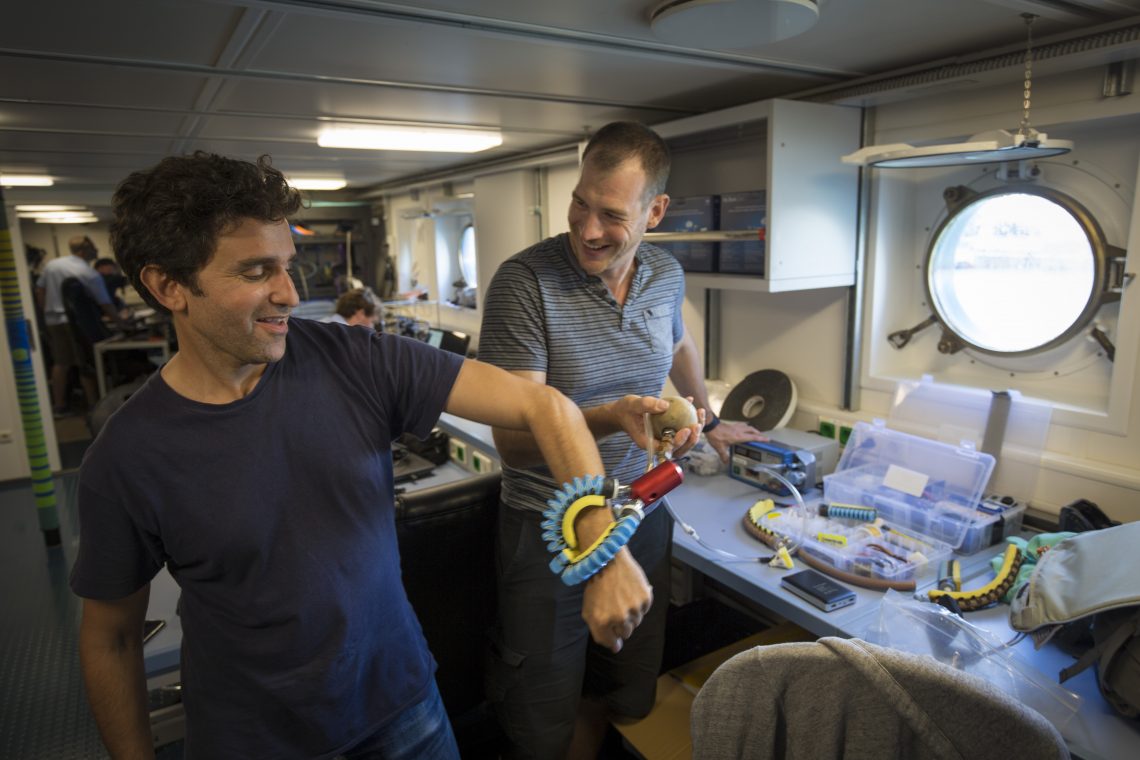
Making Plans
Our first stop is visiting the Kiribati Island of Kanton to get our passports stamped, exchange cultures and ideas and learn more about PIPA from those who helped create it. After that comes three straight weeks of robotic diving on deep coral sites. We are due to send SuBastian down to our first location on 13th October and we would love you to join and listen in on the science as we livestream the dives on our YouTube and Facebook pages. We will do periodic question and answer sessions and coral tours when we have specific sites of interest. Stay up to date by following us on Twitter, using the hashtags #DeepCoralsofPIPA and checking Facebook for the latest news.
The scientists and crew on board, as well as you watching at home, will be explorers together, visiting these unseen places for the first time, certain to get closer to answering fundamental questions about our planet’s incredible deep-ocean environment.
